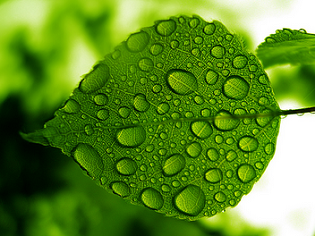
In most remodeling circles, vinyl and linoleum share a reputation as quality options for homeowners looking for an economic flooring solution.
Natural linoleum is a superior product in just about every facet, including health, longevity, and durability while vinyl, on the other hand, has some significant drawbacks, especially in the health department.
While vinyl and linoleum sheet flooring are similar in many ways, their impact on the environment and your health is where they become quite different!
Choosing Green Flooring When it comes to choosing your next floor, many materials are available from classic hardwood floors to carpet, but there are very few choices that are healthy for the environment. Linoleum is one of these few green flooring choices and will be an excellent asset to not only your home, but to the earth’s future. Vinyl, on the other hand, is not nearly as green of a flooring material.
Vinyl Flooring Drawbacks from a Green and Health Perspective Vinyl Can Trap Moisture in hot and humid climates where air conditioning is the norm. That can mean rot, flooring failure, and in a worst case scenario, the development of dangerous mold, which has been associated with everything from respiratory problems to disorders of the immune and nervous systems. Vinyl flooring off gases vinyl chloride fumes into your indoor environment. In addition to being a known carcinogen, vinyl chloride has been implicated in vision and hearing problems, birth defects, gastrointestinal problems, and disorders of the skin, respiratory system, and liver. Vinyl flooring also comes up short in the longevity department, since it rarely lasts 10 years, and shows age even quicker. That adds up to more frequent, and expensive, replacement flooring projects, and more waste sent to the landfill. Natural Linoleum Flooring is Green Flooring On the other side of the green spectrum is natural linoleum flooring. This flooring alternative is green through and through, from its impact on the environment as a whole, right on down to durability and health issues. Unlike vinyl, which is a petroleum product at heart, natural linoleum is made of renewable, natural materials like linseed oil, pine resins, and cork.
Natural linoleum’s low toxicity levels mean it doesn’t off-gas harmful volatile organic compounds (VOCs) like vinyl chloride, and it’s anti-microbial to boot. Natural linoleum is also easy to repair, stain resistant, and enjoys a long life. Where vinyl floors are lucky to make it 10 years, a natural linoleum floor can last up to 40! This green flooring option is also easy to clean and care for, so you won’t have to worry about using any harsh chemicals in you flooring maintenance.
The Cost of Going Green While it’s easy to make the case that going green with natural linoleum flooring is in your best interest from a financial and a health standpoint, most homeowners are still curious what the cost of going green is going to be if they choose natural linoleum over vinyl flooring. To be honest, you’ll probably pay a little more up front for higher quality natural linoleum products. But keep in mind that natural linoleum can outlast vinyl by up to 30 years!
If you look at it from a green perspective, those higher costs are worth every penny, and then some, in the long run. Things like healthier families, less personal time wasted on maintenance and flooring replacement projects, and investing in a better world for our children and grandchildren all add value to going green with your flooring— and that is hard to put a dollar value on. The true value of going green reaches far above any bottom line!





